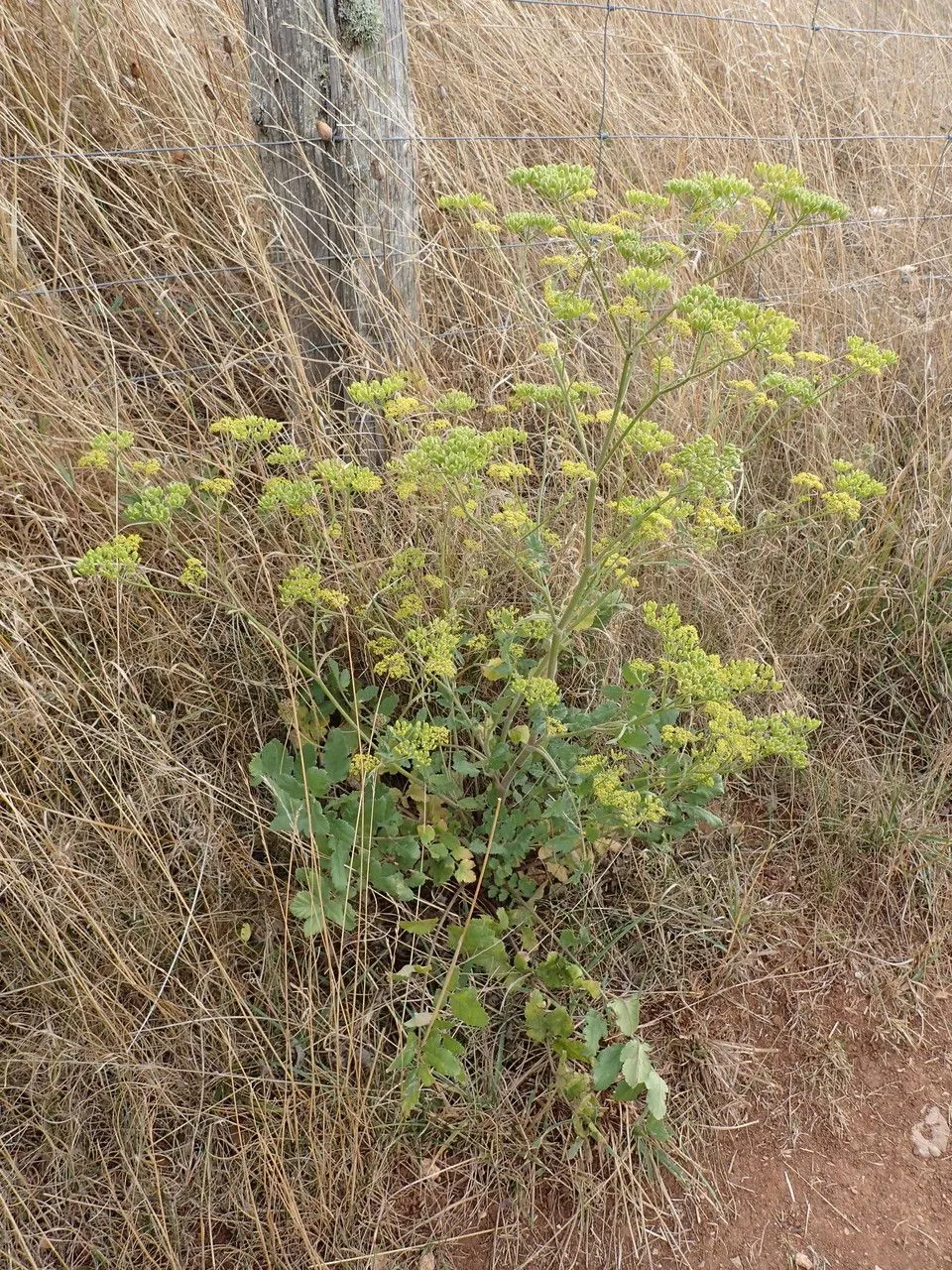
Author: L.
Bibliography: Sp. Pl.: 262 (1753)
Year: 1753
Status: accepted
Rank: species
Genus: Pastinaca
Vegetable: True
Observations: Europe to C. Siberia and Lebanon
Wild parsnip, known scientifically as Pastinaca sativa, is a notable and widespread plant belonging to the Apiaceae family. Originally detailed by the renowned botanist Carl Linnaeus in his seminal work, Species Plantarum (1753), wild parsnip has since garnered attention for its distinctive characteristics and widespread geographical distribution.
This plant is native to a broad range encompassing Europe, Central Siberia, and extending as far as Lebanon. Wild parsnip thrives in various environments, commonly found in fields, roadsides, and uncultivated lands where it can grow unchecked. Its robust adaptability has allowed it to spread beyond its native range, making it a prevalent species in many regions.
Wild parsnip is a biennial plant, meaning its lifecycle spans two years. In its first year, it develops a rosette of leaves, accumulating energy to support its growth. By the second year, it sends up a tall flower stalk which can reach several feet in height. The plant is characterized by its yellow, umbrella-like flowers that bloom in large clusters, typically seen in late spring to early summer. These flower clusters, known as umbels, are a hallmark of the Apiaceae family.
While wild parsnip has historical relevance as a cultivated vegetable, used for its edible root, it is also important to note its role as an invasive species in some areas. When encountered in the wild, caution is advised, as contact with its sap can cause phytophotodermatitis. This results in severe skin irritation and burns upon exposure to sunlight.
Despite these risks, the wild parsnip remains a fascinating subject of study for botanists and horticulturists. Its ability to adapt and thrive in varied environmental conditions provides insight into plant survival strategies and the ecological impact of invasive species.
Dan: almindelig pastinak, pastinak
Deu: pastinak
Eng: wild parsnip, parsnip, common parsnip
Por: chirivia, pastinaca
Swe: palsternacka
Fra: panais, panais sauvage, panais cultivé
Nld: pastinaak en brandpastinaak
Ita: pastinaca
Cym: llysiau gwyddelig, llysiau gwynion y gerddi, moron gwynion, moronen wen, moronen y moch, panasen, panasen wen, panasen wyllt, pannas, pannas gwyllt, pannas wyllt, pannas y moch
En: Wild parsnip, Englisc more, Parsnip, Common parsnip, Bird’s-nest, Field Parsnip, Madnip, Wild parship
Af: Witwortel
Ar: جزر أبيض
Az: Əkin cırhavucu
Ba: Пастернак үләне
Eu: Txiribi
Be: Пастарнак
Bn: পার্সনিপ
Br: Panez
Bg: Обикновен пащърнак
Ca: Xirivia, Xirivia vera
Zh: Ou fang feng, 欧防风
Hr: Pastrnjak
Cs: Pastinák setý
Da: Patinak, Almindelig pastinak, Pastinak
Nl: Pastinaak en brandpastinaak, Pastinaak, Pinksternakel, Witte wortel, Gewone Pastinaak
Eo: Pastinako
Et: Aed-moorputk
Fo: “panais sauvage, Panais, Panais commun, Panais potager, Carotte blanche”
Fi: Palsternakka, Euroopanpalsternakka
Fr: Panais, Panais sauvage, Panais cultivé, Panais-légume, Pastinacier
Gl: Charouvía
Ka: Ძირთეთრა
De: Gewöhnlicher Pastinak, Pastinak, Gemeiner Pastinak
El: Παστινάκη η εδώδιμος
He: גזר לבן
Hu: Pasztinák
Is: Lífsjurt, Nípa
Io: Pastinako
Id: Parsnip
Ga: Meacan bán
It: Pastinaca, Pastinaca comune, Pastinacá
Kk: Ботташық
Ko: 파스닙
Li: Pingstelnakel
Lt: Paprastasis pastarnokas
Lb: Pastinak
Mk: Пашканат
Gv: Pesmad
No: Pastinakk
Fa: شقاقل
Pl: Pasternak zwyczajny
Pt: Cherovia, Chirivia, Pastinaca
Ro: Păstârnac
Ru: Пастернак посевной
Gd: Curran geal
Sr: Пашканат
Sd: شقاقل
Sk: Paštrnák siaty
Es: Pastinak, Chirivia, Chirivía
Sv: Palsternacka, Vild palesternacka
Zh-tw: 歐防風
Th: พาซนิพ
Zh-hant: 歐防風
Tr: Yabani havuç
Uk: Пастернак посівний
Ur: شقاقل
Vi: Củ cải vàng
Wa: Pastinåke
Cy: Panasen, Llysiau Gwyddelig, Llysiau Gwynion y Gerddi, Moron Gwynion, Moronen Wen, Moronen y Moch, Panasen Wen, Panasen Wyllt, Pannas, Pannas Gwyllt, Pannas Wyllt, Pannas y Moch
Taken Jun 24, 2000 by Tela Botanica − Liliane ROUBAUDI (cc-by-sa)
Taken Jul 22, 2022 by Charlotte Treschow (cc-by-sa)
Taken Aug 12, 2020 by Laurent Lag (cc-by-sa)
Taken Aug 17, 2020 by jeclerencia (cc-by-sa)
Taken Sep 3, 2017 by Tela Botanica − Sylvain PIRY (cc-by-sa)
Taken Jul 22, 2022 by Charlotte Treschow (cc-by-sa)
Taken Aug 17, 2020 by jeclerencia (cc-by-sa)
Taken Oct 9, 2021 by Trap Hers (cc-by-sa)
Taken Aug 12, 2020 by Laurent Lag (cc-by-sa)
Taken Sep 3, 2017 by Tela Botanica − Sylvain PIRY (cc-by-sa)
Taken Jun 24, 2000 by Tela Botanica − Liliane ROUBAUDI (cc-by-sa)
Taken Aug 10, 2021 by Philippe Bissières (cc-by-sa)
Taken Aug 9, 2021 by Cédric Jankowiak (cc-by-sa)
Taken Sep 3, 2017 by Tela Botanica − Sylvain PIRY (cc-by-sa)
Taken Sep 3, 2017 by Tela Botanica − Sylvain PIRY (cc-by-sa)
Taken Dec 6, 2019 by Pereira Jorge (cc-by-sa)
Taken Aug 10, 2021 by Philippe Bissières (cc-by-sa)
Taken Aug 9, 2021 by Cédric Jankowiak (cc-by-sa)
Taken Jul 22, 2022 by Charlotte Treschow (cc-by-sa)
Taken Aug 12, 2020 by Laurent Lag (cc-by-sa)
Taken Jul 2, 2018 by dredodo (cc-by-sa)
Taken Aug 2, 2019 by George Annette (cc-by-sa)
Taken Jul 20, 2022 by Johannes Töger (cc-by-sa)
Taken Jan 1, 1800 by Tela Botanica − Thierry Pernot (cc-by-sa)
Taken Sep 3, 2017 by Tela Botanica − Sylvain PIRY (cc-by-sa)
Taken Aug 19, 2014 by Tela Botanica − Liliane Roubaudi (cc-by-sa)
Taken Jul 26, 2022 by Waldemar Zeja (cc-by-sa)
Taken Aug 21, 2019 by Pietro Brignoli (cc-by-sa)
Taken Aug 10, 2021 by Easger (cc-by-sa)
Taken Aug 11, 2020 by michel cosme (cc-by-sa)
© copyright of the Board of Trustees of the Royal Botanic Gardens, Kew.
© copyright of the Board of Trustees of the Royal Botanic Gardens, Kew.
© copyright of the Board of Trustees of the Royal Botanic Gardens, Kew.
Growth habit: Forb/herb
Ph maximum: 7.0
Ph minimum: 6.5
Light: 7
Atmospheric humidity: 5
Soil nutriments: 6
Family: Myrtaceae Author: (F.Muell.) K.D.Hill & L.A.S.Johnson Bibliography: Telopea 6: 402 (1995) Year: 1995 Status:…
Family: Rubiaceae Author: Pierre ex A.Froehner Bibliography: Notizbl. Bot. Gart. Berlin-Dahlem 1: 237 (1897) Year:…
Family: Sapindaceae Author: Koidz. Bibliography: J. Coll. Sci. Imp. Univ. Tokyo 32(1): 38 (1911) Year:…
Family: Asteraceae Author: A.Gray Bibliography: Pacif. Railr. Rep.: 107 (1857) Year: 1857 Status: accepted Rank:…
Family: Fabaceae Author: Medik. Bibliography: Vorles. Churpfälz. Phys.-Ökon. Ges. 2: 398 (1787) Year: 1787 Status:…
Family: Aspleniaceae Author: (Cav.) Alston Bibliography: Bull. Misc. Inform. Kew 1932: 309 (1932) Year: 1932…